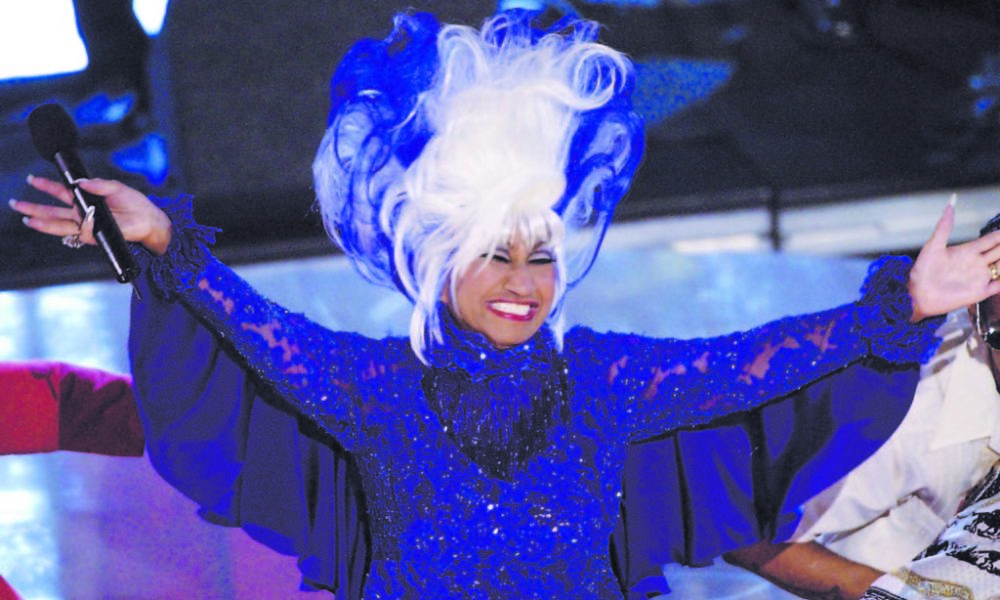October 2020
Jerry Masucci and Johnny Pacheco

Where the idea of Genaro Masucci, known as Jerry Masucci ((Brooklyn, New York, Oct. 7, 1934 -Argentina Dec. 21, 1997)) and Juan Azarías Pacheco Kiniping, known as Johnny Pacheco ((Santiago, Dominican Republic, Mar. 25, 1935)) to give the title to the record label “Fania” arose.
The name was taken from the old Cuban son: “Fania”, which was successfully performed by the Conjunto Estrellas de Chocolate and composed by Reinaldo Bolaños.
The lyrics present a syncretism between the Spanish and African languages.

Members of the Conjunto Estrellas De Chocolate.
Theme: Fania
Author: Reinaldo Bolaños
Voice: Filiberto Hernández Fuentes
Voice: Chinese Lion Lahera Wilson
Voice: Agustín Cabrera .
Three: Andrés “Nino Rivera” Echevarría
Bass guitar: Sergio De Cuba
Bongos: “Pichi”
Piano: David Palomares
Trumpet: Armando “El Gorilla” Albertini
Felix “Chocolate” Alfonso was not afraid to put together and lead an ensemble in the style of Arsenio and Chappottín in 1959. The ensemble format was part of the medium in which he swam like a fish in water.
He knew the best montuneros musicians and called them together. The good ensembles still retained the favor of part of the public.
Jesús Gorís, the architect of the Puchito label, didn’t think twice about it and recorded them right away.
Victrolas in bars and bodegas all over the island began to spread the son montuno macho of Las Estrellas de Chocolate.
But the 1960s in Cuba were too strong, diverse and creative, and the good work of Chocolate with its stars had to deal with a scene that was too competitive for a novel ensemble.
As often happens, it took several years for the Chocolate Stars to finally shine as stars and be on everyone’s lips.

Fania, although composed by Reinaldo Bolaños for Conjunto Estrellas de Chocolate, was recorded on the voice of Pedro Juan Rodríguez Ferrer “Pete” El Conde Rodríguez (Ponce, Puerto Rico, Jan. 31, 1933 – Dec. 2, 2000); who along with Pacheco’s group recorded the company’s first album entitled “Mi Nuevo Tumbao. Cañonazo”, with a majority of Cuban songs, like most of the albums recorded by Pacheco and many of those recorded by that label.
In 1964 Jhonny Pacheco and Jerry Massucci founded Fania Records and created the international and renowned Fania All Stars.
Pete was the first singer that Fania had, and on his shoulders was the responsibility of taking that project forward.
In the first Fania album Cañonazo (1964) Pete interpreted the theme Fania, composition of Reinaldo Bolanos and with which the band was inaugurated.
It is 1964 and the history of Latin music is about to change.
The Dominican flutist Johnny Pacheco, one of the most popular Latin artists in New York, has parked his flute, changed his orchestra and recorded an album, “Mi Nuevo Tumbao…Cañonazo”.
It’s a curious recording, although it doesn’t seem special.
It sounds like a somewhat modernized Sonora Matancera. But it has been released under a new label, Fania Records, which he has just founded in partnership with New York lawyer Jerry Masucci.
And what was only meant to be a start to relaunch and boost Pacheco’s career is out of the hands of both of them and becomes a phenomenon.
Fania All StarsAdditional information:
The name of one of the most important record labels in Latin America and the world All comes from a song by Cuban Reinaldo Bolaños called Fanía, which refers to a story about a woman whose name was Epifanía and her mentally challenged son.
The story goes that in the middle of a fight between the two, she threw flour (funche as it is called in the Caribbean) in her son’s face and he responded “Fania Funché”.
Bolaños liked the story very much, as did the founders of the record company Jerry Masuci and Jhonny Pacheco, who decided to name their music company after her and include the song in the first album produced.
With the passage of time, they stopped pronouncing the tilde on the “i” and started calling it Fania, without an accent.
Research sources:
Thomas Muriel (Puerto Rico)







